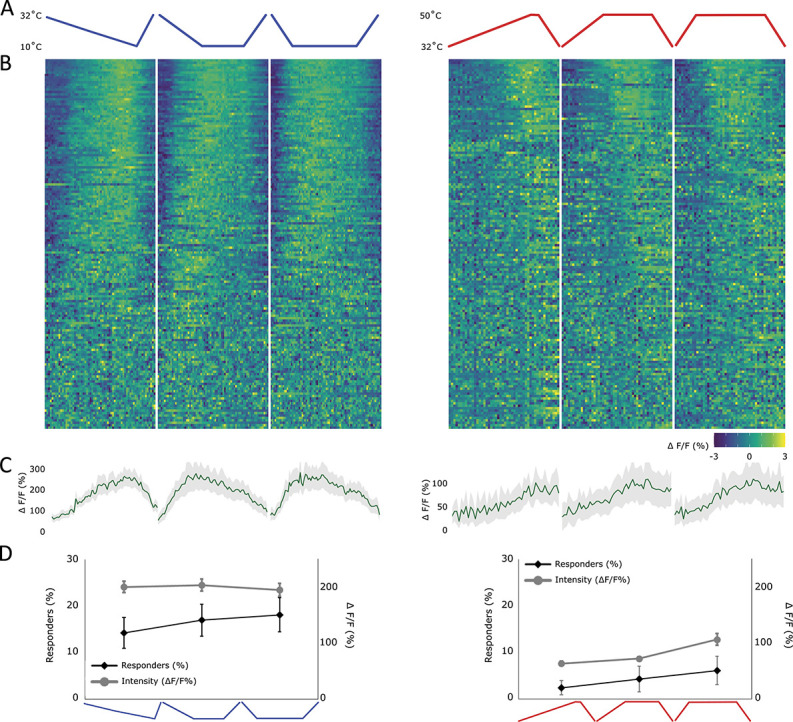Figure 6.

Responses of lamina I projection neurons to temperature ramps of different speeds. This figure used “rate of change heating/cooling ramps,” cf Materials and Methods. (A) Profile of the cooling (blue) and heating (red) stimulus applied to the ipsilateral paw, including a slow (0.2°C/s), medium (0.5°C/s), and fast ramp (2°C/s) (left to right). (B) Heat map of the response of all recorded lamina I projection neurons, sorted by strength of correlation with the respective thermal ramp profile (in absolute measures). Each cell's fluorescence is normalised (mean subtracted and divided by SD). Left: neurons responding to the above depicted cold ramps and right: neurons responding to the above depicted hot ramps. (C) Average profile of cells showing any response to either a cold (left) or a hot stimulus (right). Gray shaded area ± SEM. (D) Percentage of cells responding (diamond shapes, black line, left y-axis) and the average intensity of the response (circles, gray line, right y-axis) to each ramp individually. Mean ± SEM. N = 7 animals and n = 152 cells.
